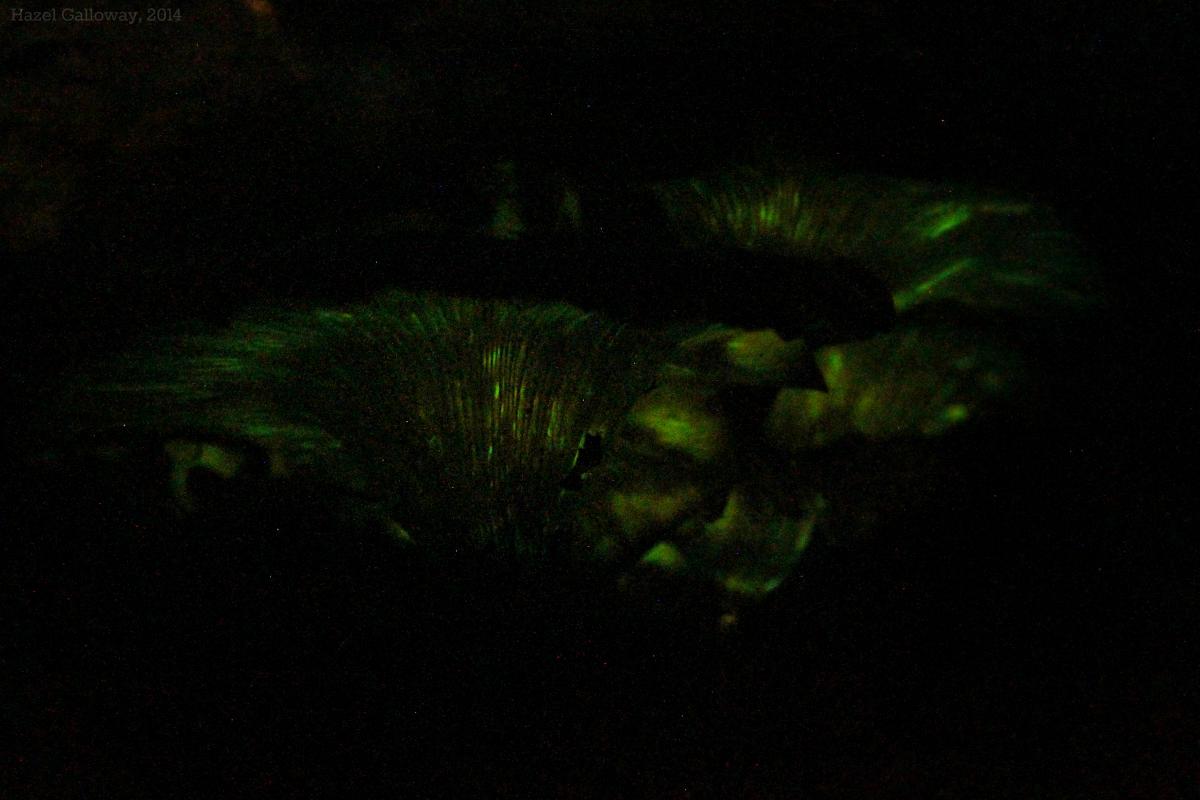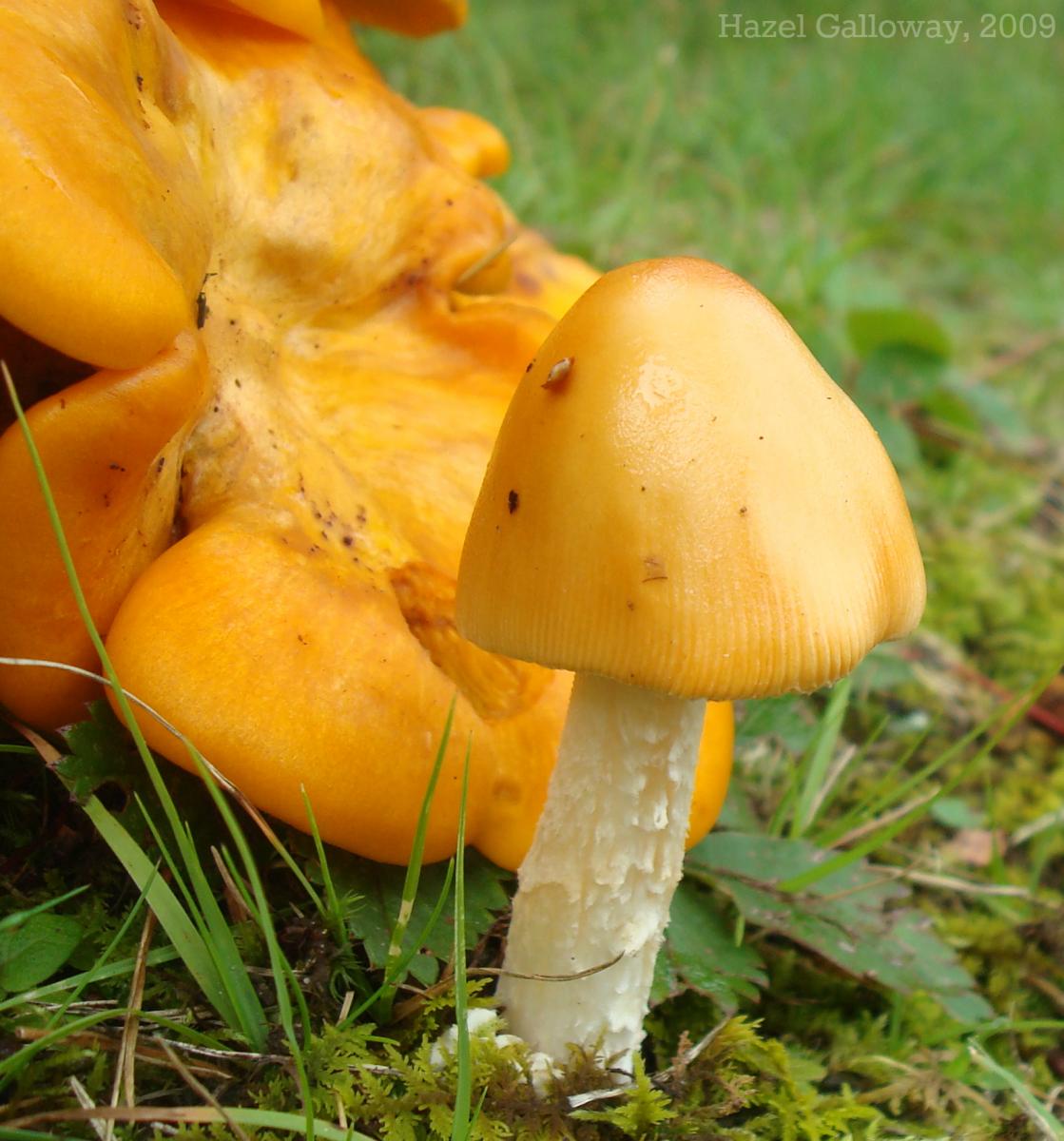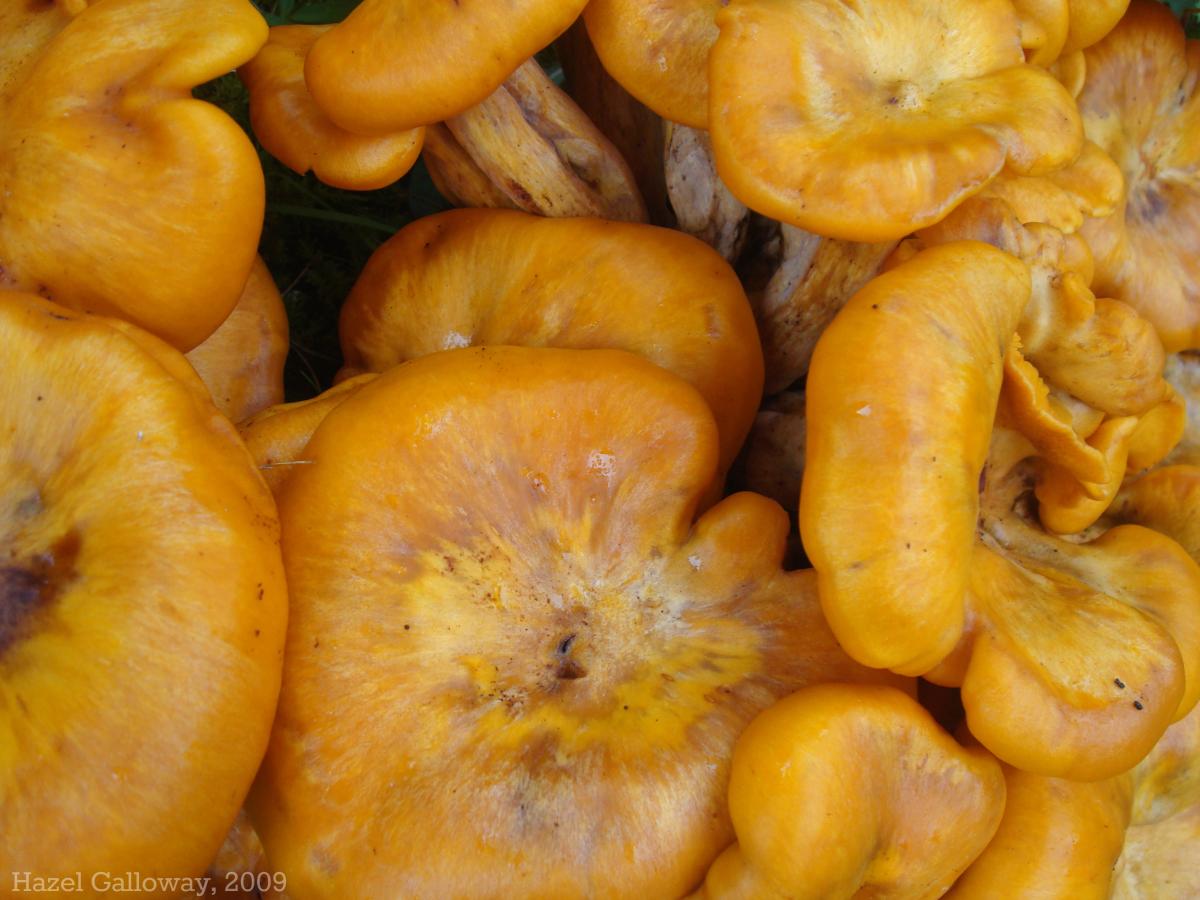Unlike the earlier article on the swamp beacon fungi, there can be no question as to whether the jack-o-lantern mushroom fully merits its name. These mushrooms are named not only for their bright orange, pumpkin-like color, but also for their bioluminescent properties. The gills contain compounds called luciferases, which are waste products or secondary metabolites produced by the mushroom’s underground structure. It is thought that they are transferred to the gills as a method of waste disposal—when the mushroom dies and decays, the luciferases will be lost to the fungus as well. Luciferases are a class of oxidative enzymes which derives its name from ‘Lucifer,’ literally meaning ‘light-bearer.’ They are the same type of compound present in fireflies, certain bioluminescent bacteria, and some copepod species, among others.
Jack-o-lantern mushrooms are fleshy, bright orange mushrooms found growing in dense clusters on rotting wood, dead trees, and stumps. However, the substrate can sometimes be concealed under the leaf litter, giving the impression that it is growing directly out of the ground like its edible look-a-like, the chanterelle. There are two primary ways to distinguish the species. Firstly, chanterelles rarely grow in dense clusters, and never directly on rotting wood. Secondly, chanterelles have false gills (folds on the underside of the cap not structurally distinct from the flesh of the cap itself) whereas jack-o-lantern mushrooms have true gills (structures truly separate from each other and from the flesh of the cap). For those interested  in collecting mushrooms to eat, these features can be the only difference between a prized edible and a trip to the hospital. Jack-o-lantern mushrooms contain the toxin muscarine, which, although not deadly in humans, causes severe cramps, diarrhea, vomiting, and abdominal pain for several days.
in collecting mushrooms to eat, these features can be the only difference between a prized edible and a trip to the hospital. Jack-o-lantern mushrooms contain the toxin muscarine, which, although not deadly in humans, causes severe cramps, diarrhea, vomiting, and abdominal pain for several days.
Like many fungi, Omphalotus olearius is the subject of a taxonomic dispute. O. olearius is a European species which some argue is distinct from jack-o-lantern mushrooms found in the New World. Those in favor of the distinction classify the fungi found on the east coast as O. illudens, while those found on the west coast would be O. olivascens.
These mushrooms can be found growing on dead hardwoods (mainly oaks), and are numerous in both forests and developed areas—wherever they have access to their preferred substrate. They fruit in the late summer or fall. Lisa collected these specimens near Wind Rock, although clusters have been known to appear at the base of the dead oak in front of Lewis or the live one in front of Rafinesque. The glowing gills were observed last night and can still be seen, if one allows one’s eyes to adjust to the darkness.
Hazel Galloway
Sources:





